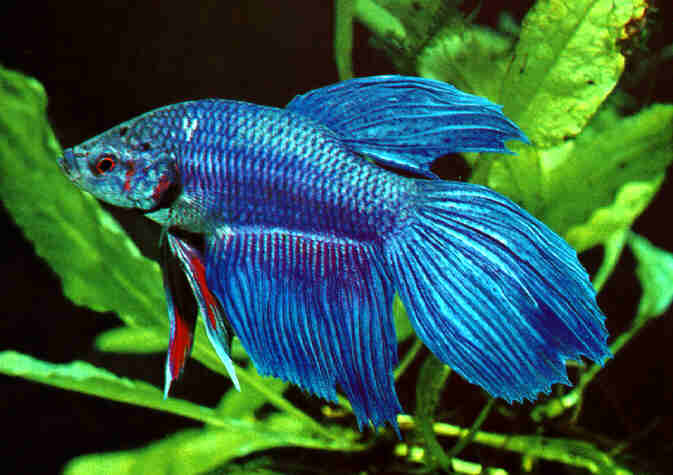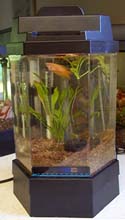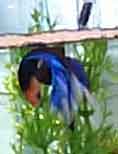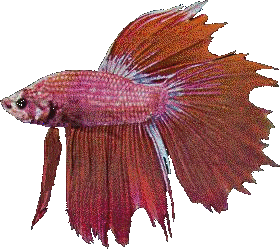|
.
Siamese Fighting Fish - Betta splendens
Conservation Status: Unknown. Tank bred specimens are popular as a pet. Threats: Not in IUCN Red List. Size: Max. size: 6.5 cm TL; maximum reported age: 2 years. May live longer in good aquaculture. Water Requirements: clean, freshwater, temperature 25°C - 27°C is ideal; can tolerate warmer water to 30°C. Tolerates a wide range of conditions, from slightly acidic, moderately soft water to alkaline hard water (pH up to 8.0 is tolerated), which means that any domestic water supply is suitable once dechloraminated and aged. Tank Habitat: As Bettas are air breathers, the tank must be fitted with a close-fitting lid and must have an air space between it and the water so that the fish breathe humid air of the same temperature as the water. These fish will survive in limited space or water with low oxygen levels. However, holding male Bettas in very small containers should be discouraged; a well planted tank is best. Frequent water changes are essential, with well conditioned, chlorine and chloramine free water used and care taken to adjust for temperature and pH. Tank maintenance for healthy Bettas. Diet: Omnivorous; small insects, insect larvae and crustaceans; adapts well to flake foods, pellets and frozen foods such as beef-heart mixes; condition for breeding by feeding brine shrimp or black worms. Sexing: Sexual dimorphism is obvious; male have longer fins; females have short fins, more rounded bodies and show several lateral, horizontal stripes. Some domestic strains have females as colourful as the males but these females usually show horizontal markings when ready for breeding. |



